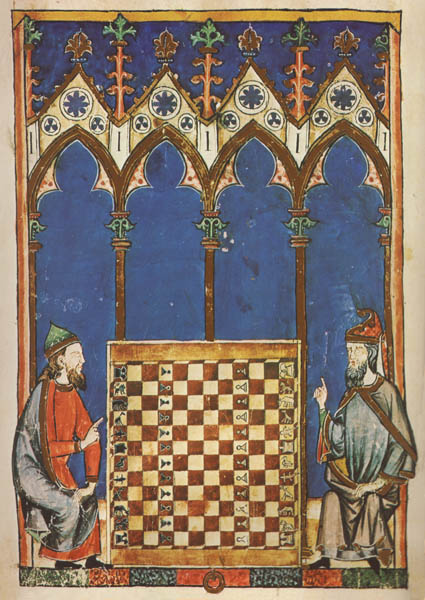
King

The King moves in two different ways. As shown near the bottom of the diagram, to any adjacent square, and (as shown near the top to the diagram) also is able to leap two squares diagonally or orthogonally.

Bird/aanca
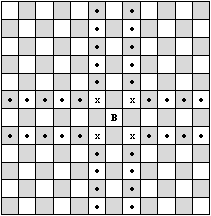
Squares marked with an "x" indicate that the square is an access square, and must be vacant for the piece to continue to move in that direction.
This piece is considered a sliding piece, and so cannot leap over intervening pieces.
This piece is called a Griffon in Fairy Chess terminology.
Because as the wise men tell in their books wherever this bird flies no other bird dares to take off, and those which are in trees and caves and dare not to leave them but rather strive to hide as well as they can because it is so large that it carries the elephant and all the other large beasts it finds to its nest. And this bird is very beautiful because its chest and neck shine as though they were gilt. And it has yellow sides and wings. Its feet, eyes, and beak are red as scarlet and it has very black claws. And it has on its head a round spiked crown, like a diadem.
And this bird rears its young in the highest peaks it can find and it does this for two reasons. First, it always wants clear, clean air and second, because it has short legs and long wings and so cannot take off from a low place. And whenever it wants to move to fly, it raises up as if to jump and then flies straight to where it wants to go. Thus they ordered that its move is composed of two different steps. First, like the fers it makes one step of one single square to any adjoining square on the diagonal(s) on which it stands. It can remain on that square or may also continue to any square on the file or rank of that square, maintaining its movement in the same direction away from its starting square until the end of the board or until it captures.
Its jumping movement is such that if it begins on a black square, then it will move one step of one square of the same color along the diagonal like the fers and then continue straight ahead as far as it likes. And if it begins on a white square, it moves in the same way. Starting on a black square, then it may not enter the four white squares [fol. 81v] that surround its starting square and likewise if it begins on a white square it may not enter those four surrounding black squares.

Crocodile

The Crocodile moves as the modern chess bishop.

Giraffe

The Giraffe is a (2,3) leaper. This piece is called a Zebra in Fairy Chess terminology.

Rhinoceros
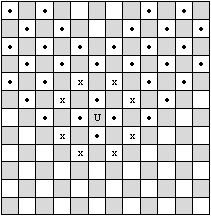
The Rhinoceros has a two-part move. The first part is a knight's move, a (1,2) leaper (as shown by the x's). The second (optional) part is a forward only bishop move.

Lion
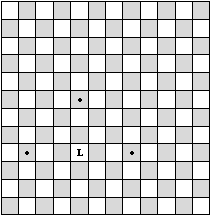
The Lion is a (0,3) leaper, but only in the forward or sideways directions.

Rook
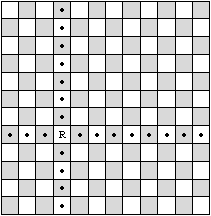
The Rook moves as it does in modern chess.

Pawn

